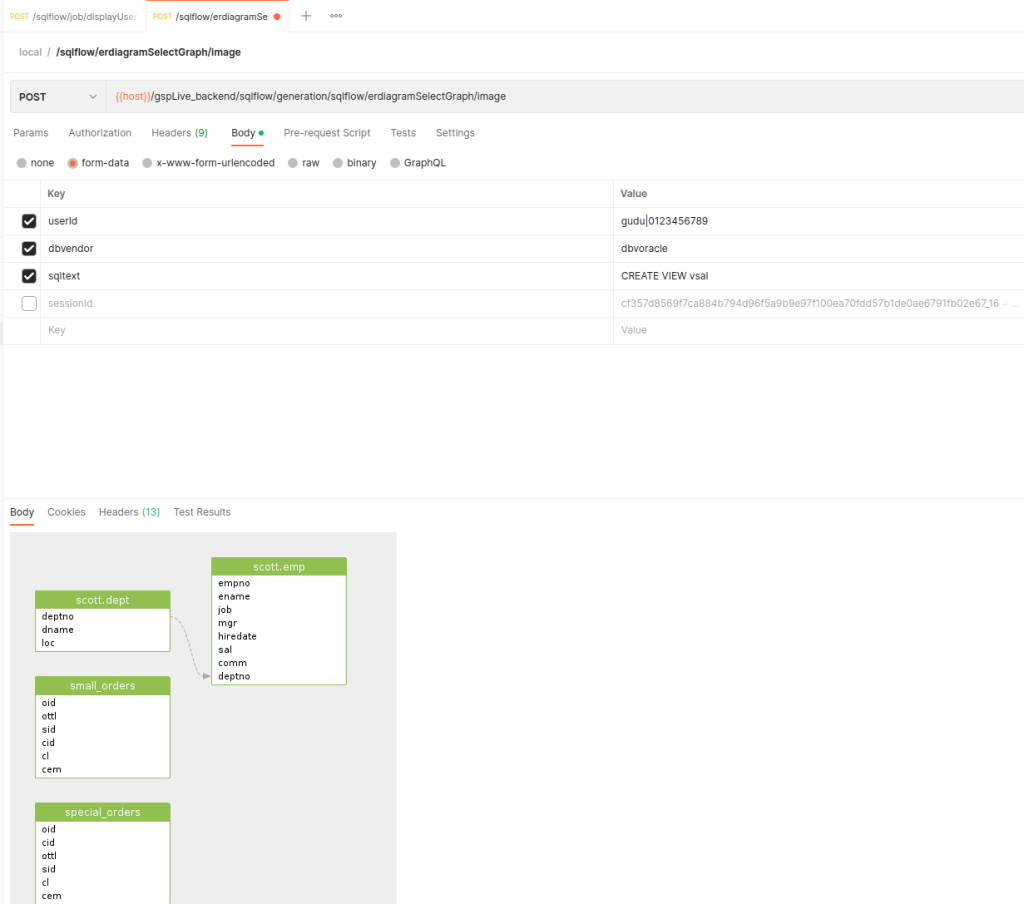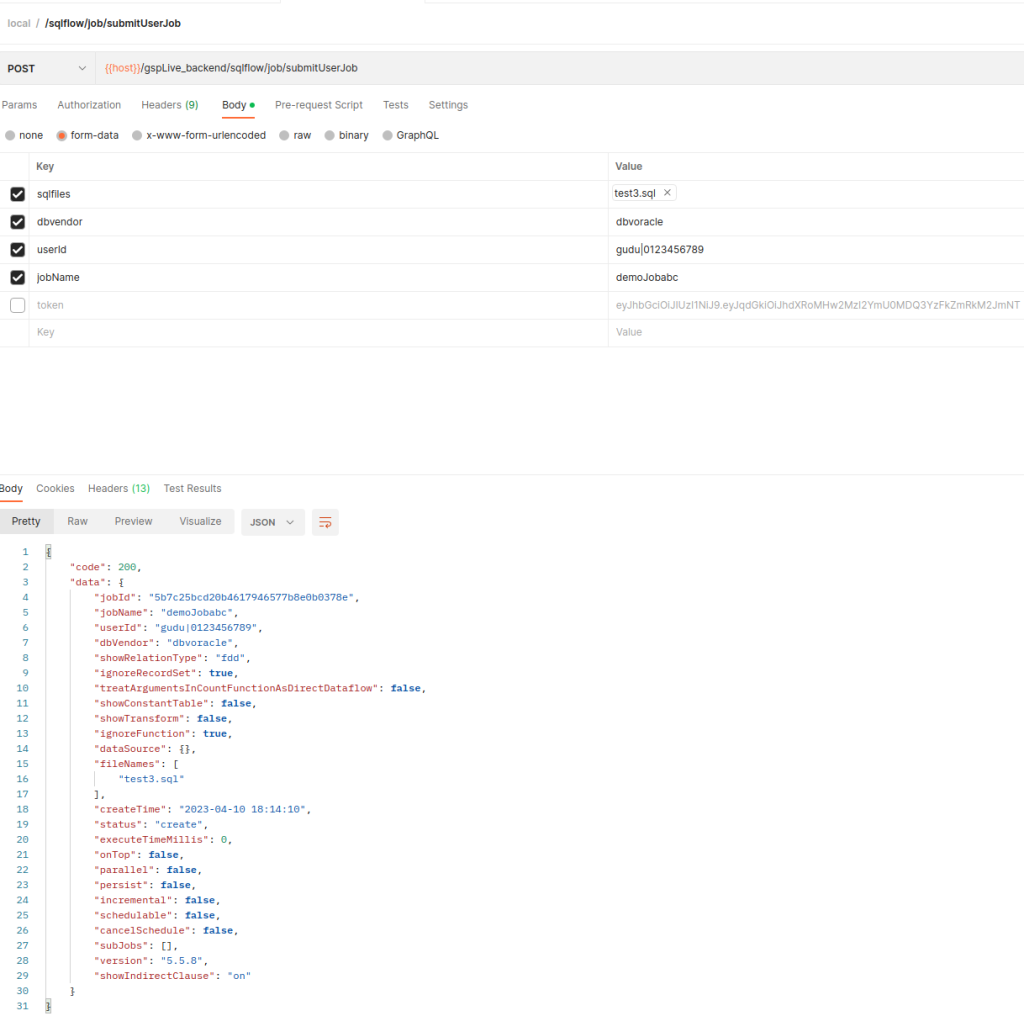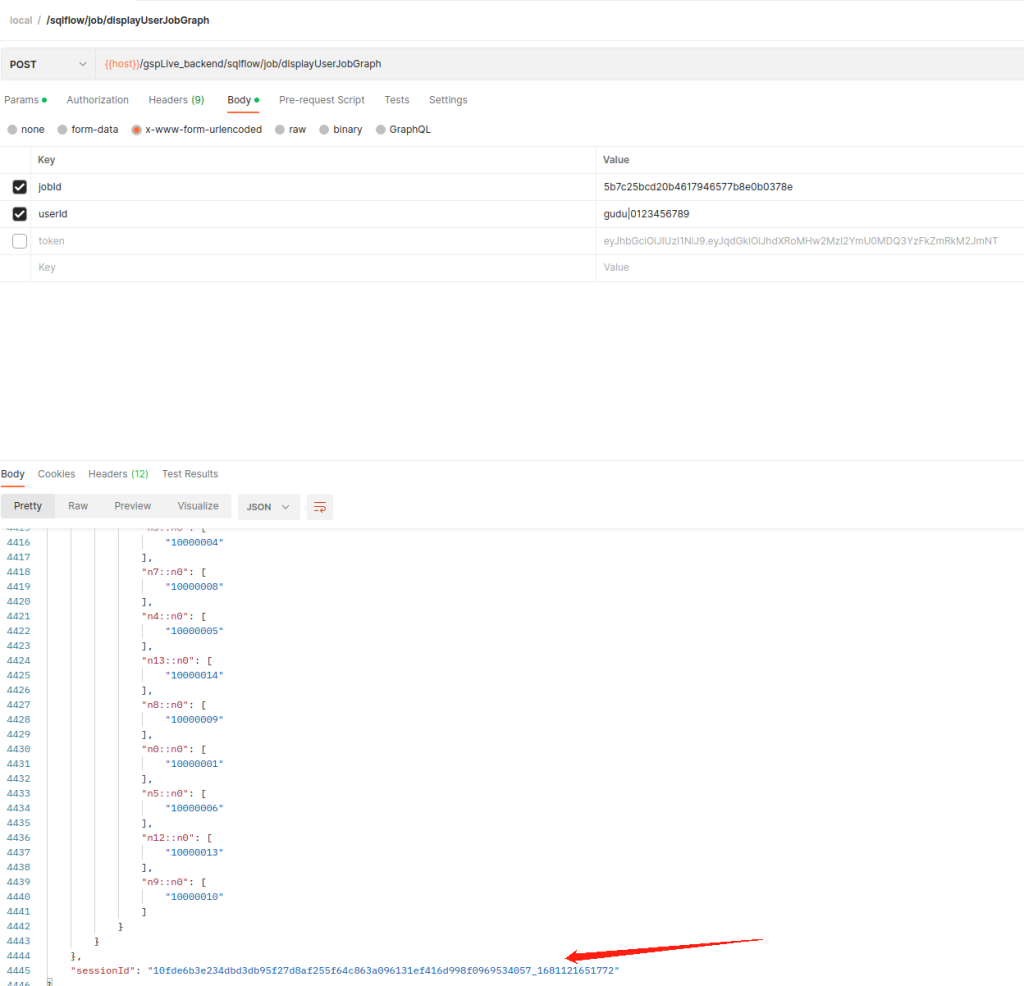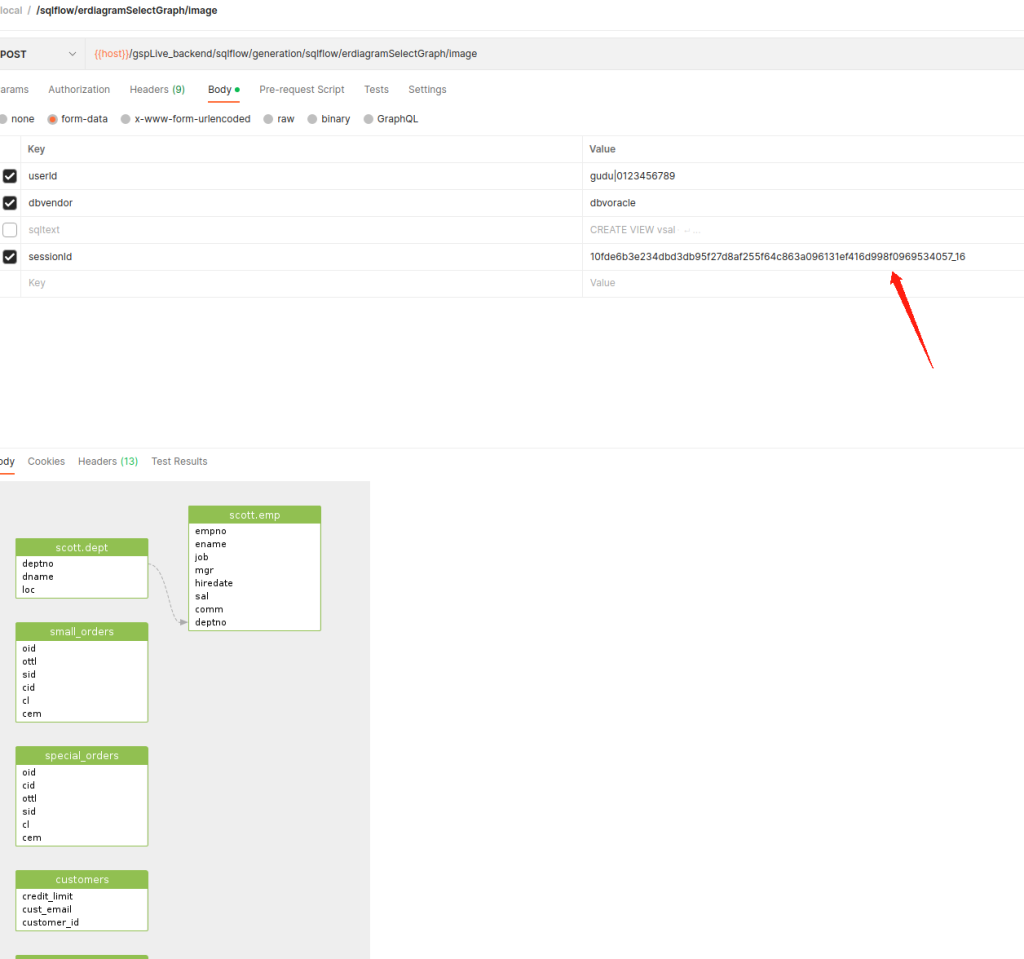Export E-R Diagram with SQLFlow REST API
Gudu SQLFlow is an analysis software for analyzing SQL statements and discovering data lineage relationships. It is often used with metadata management tools and is a basic tool for enterprise data governance. Check this introduction blog if you don’t know much about Gudu SQLFlow.

SQLFlow is capable to convert SQL to Entity-Relation(ER) Diagram as well as to visualize the relations between tables and fields so that you can quickly understand the design model of the database and conduct efficient team communication. You can either go to https://sqlflow.gudusoft.com to visualize your database with E-R Diagram or you can use SQLFlow REST API to generate and to export the ER Diagram.
In this blog, we will show you how to generate the E-R diagram with SQLFlow REST API.
The API Endpoint
The related SQLFlow Api to generate ER diagram image is:
/sqlflow/generation/sqlflow/erdiagramSelectGraph/imageThis API can directly take SQL statement text as input or it can read session id and generate the ER diagram based on the given session Id. Check the following parameter table:
| Parameter Name | Type | Description |
| userId | string | the user id of sqlflow client |
| token | string | The token is only used when connecting to the SQLFlow Cloud server, it is not used when connect to the SQLFlow on-premise version. |
| sessionId | string | graph session Id |
| sqltext | string | SQL statement text |
| jobId | string | give the job Id if need to use the job settings |
| database | string | database |
| dbvendor | string | database vendor |
| defaultDatabase | string | default databse when there’s no metadata |
| defaultSchema | string | default schema |
| defaultServer | string | default server |
| normalizeIdentifier | boolean | whether normalize identifier |
| server | string | server to filter |
| table | string | table to filter |
| schema | string | schema to filter |
Let’s say from database, we have got the following DDL:
CREATE VIEW vsal
AS
SELECT a.deptno "Department",
a.num_emp / b.total_count "Employees",
a.sal_sum / b.total_sal "Salary"
FROM (SELECT deptno,
Count() num_emp,
SUM(sal) sal_sum
FROM scott.emp
WHERE city = 'NYC'
GROUP BY deptno) a,
(SELECT Count() total_count,
SUM(sal) total_sal
FROM scott.emp
WHERE city = 'NYC') b
;
INSERT ALL
WHEN ottl < 100000 THEN
INTO small_orders
VALUES(oid, ottl, sid, cid)
WHEN ottl > 100000 and ottl < 200000 THEN
INTO medium_orders
VALUES(oid, ottl, sid, cid)
WHEN ottl > 200000 THEN
into large_orders
VALUES(oid, ottl, sid, cid)
WHEN ottl > 290000 THEN
INTO special_orders
SELECT o.order_id oid, o.customer_id cid, o.order_total ottl,
o.sales_rep_id sid, c.credit_limit cl, c.cust_email cem
FROM orders o, customers c
WHERE o.customer_id = c.customer_id;
create table scott.dept(
deptno number(2,0),
dname varchar2(14),
loc varchar2(13),
constraint pk_dept primary key (deptno)
);
create table scott.emp(
empno number(4,0),
ename varchar2(10),
job varchar2(9),
mgr number(4,0),
hiredate date,
sal number(7,2),
comm number(7,2),
deptno number(2,0),
constraint pk_emp primary key (empno),
constraint fk_deptno foreign key (deptno) references dept (deptno)
);Generate ER diagram with SQL text
To generate ER diagram from SQL statement text, simply put the text in sqltext parameter.
Sample:
curl --location 'https://<sqlflow url>/gspLive_backend/sqlflow/generation/sqlflow/erdiagramSelectGraph/image' \
--header 'accept: image/*' \
--form 'userId="gudu|0123456789"' \
--form 'dbvendor="dbvoracle"' \
--form 'sqltext="CREATE VIEW vsal
AS
SELECT a.deptno \"Department\",
a.num_emp / b.total_count \"Employees\",
a.sal_sum / b.total_sal \"Salary\"
FROM (SELECT deptno,
Count() num_emp,
SUM(sal) sal_sum
FROM scott.emp
WHERE city = '\''NYC'\''
GROUP BY deptno) a,
(SELECT Count() total_count,
SUM(sal) total_sal
FROM scott.emp
WHERE city = '\''NYC'\'') b
;
INSERT ALL
WHEN ottl < 100000 THEN
INTO small_orders
VALUES(oid, ottl, sid, cid)
WHEN ottl > 100000 and ottl < 200000 THEN
INTO medium_orders
VALUES(oid, ottl, sid, cid)
WHEN ottl > 200000 THEN
into large_orders
VALUES(oid, ottl, sid, cid)
WHEN ottl > 290000 THEN
INTO special_orders
SELECT o.order_id oid, o.customer_id cid, o.order_total ottl,
o.sales_rep_id sid, c.credit_limit cl, c.cust_email cem
FROM orders o, customers c
WHERE o.customer_id = c.customer_id;
create table scott.dept(
deptno number(2,0),
dname varchar2(14),
loc varchar2(13),
constraint pk_dept primary key (deptno)
);
create table scott.emp(
empno number(4,0),
ename varchar2(10),
job varchar2(9),
mgr number(4,0),
hiredate date,
sal number(7,2),
comm number(7,2),
deptno number(2,0),
constraint pk_emp primary key (empno),
constraint fk_deptno foreign key (deptno) references dept (deptno)
);"'Hint: SQLFlow On-Premise is used in the above capture, hence token is not required and only userId is given in param. Please refer to this document to check how to get the userid and the token.
Result:

Generate ER diagram using session Id
Create SQLFlow Job
The following endpoint is to create a SQLFlow:
/sqlflow/job/submitUserJob
Wait few seconds and If we check our job list, we should have this demoJob2 in our job success list. You can verify that ethiter go to the SQLFlow interface or use another SQLFlow REST API /sqlflow/job/displayUserJobsSummary.

Great! After checking the SQLFlow web, we have confirmed the SQLFlow Job is succeeded.
Retrieve Data Session
Now we have our Job created and we need select our data now. To do that, invoke:
/sqlflow/job/displayUserJobGraphGive the Job Id as the input and in the response of the above API, we will have the sessionId:

Generate ER diagram
With the sessionId, now we can invoke /sqlflow/generation/sqlflow/erdiagramSelectGraph/image to generate the selected data element.
curl --location 'https://<sqlflow url>/gspLive_backend/sqlflow/generation/sqlflow/erdiagramSelectGraph/image' \
--header 'accept: image/*' \
--form 'userId="gudu|0123456789"' \
--form 'dbvendor="dbvoracle"' \
--form 'sessionId="10fde6b3e234dbd3db95f27d8af255f64c863a096131ef416d998f0969534057_1681121651772"'

